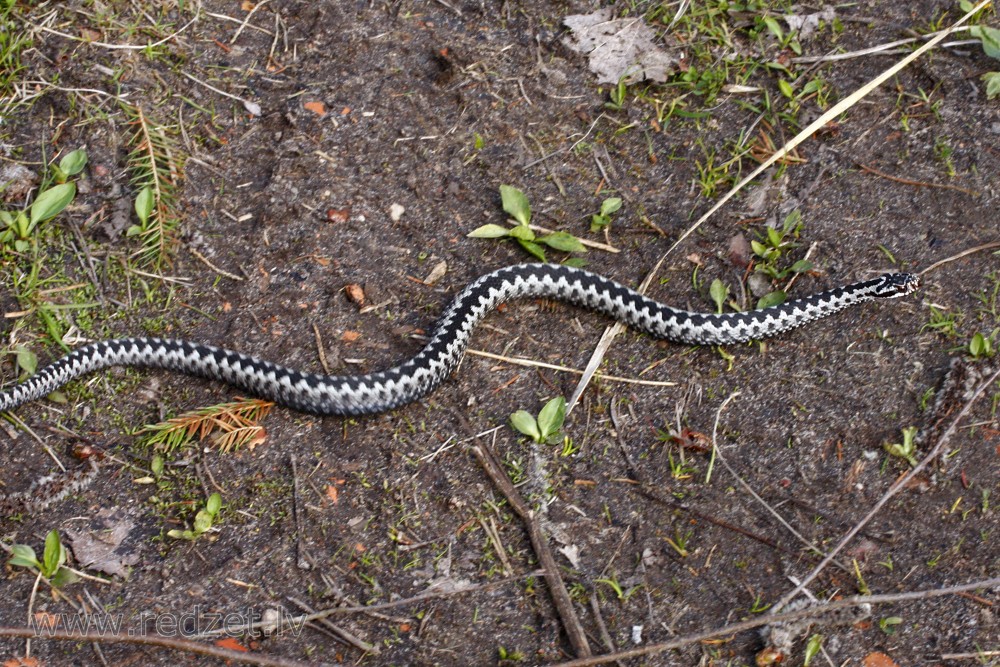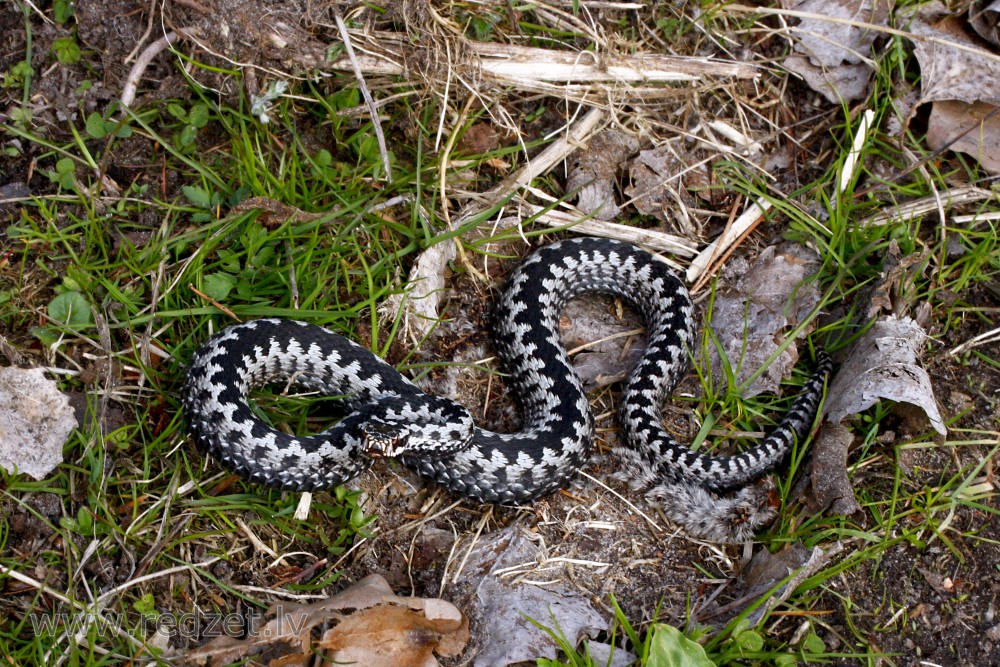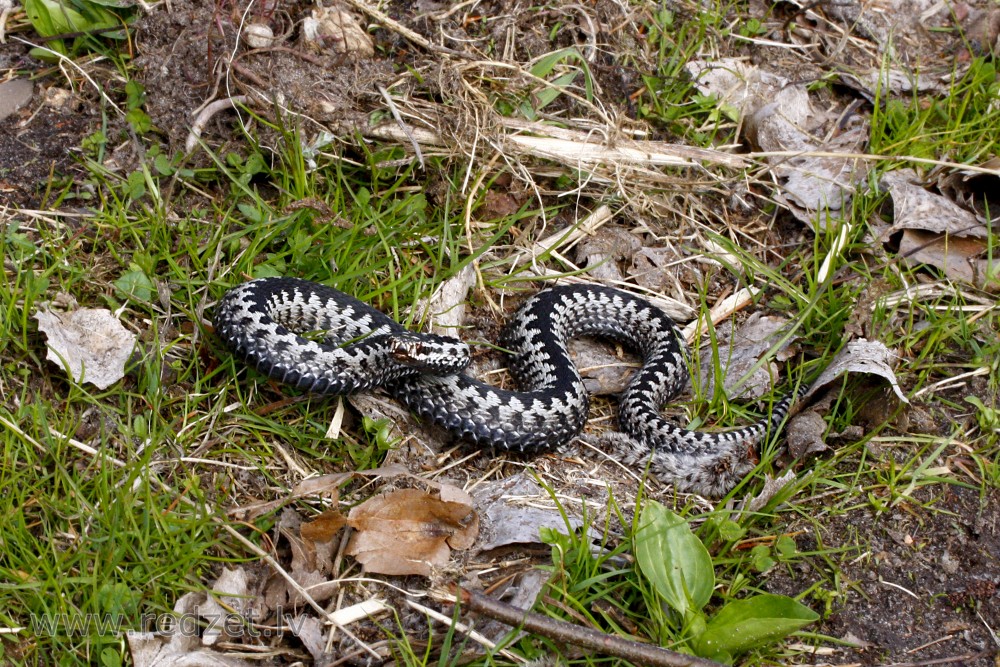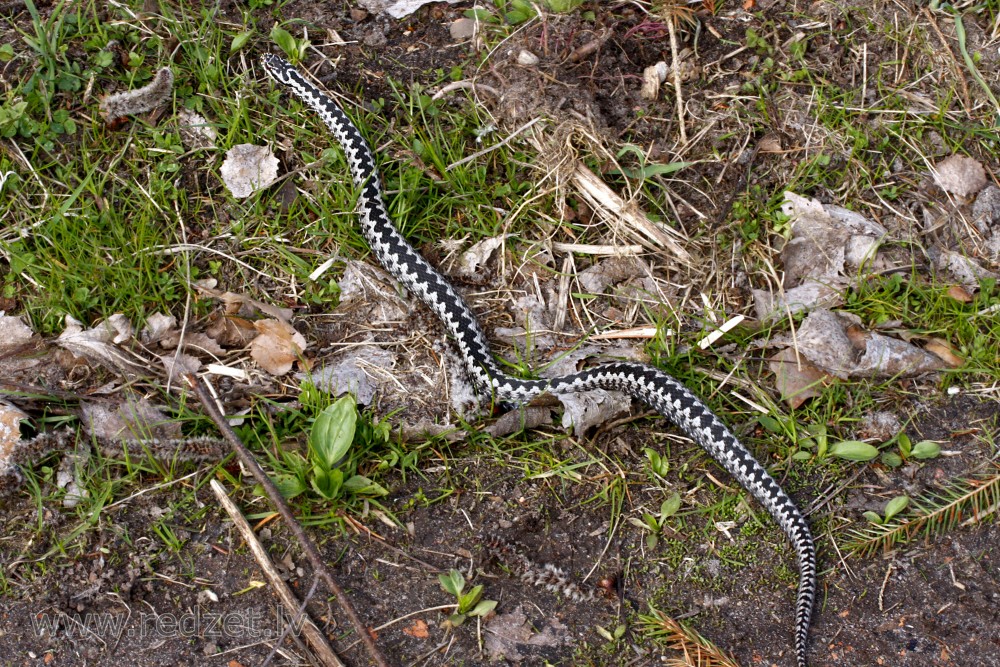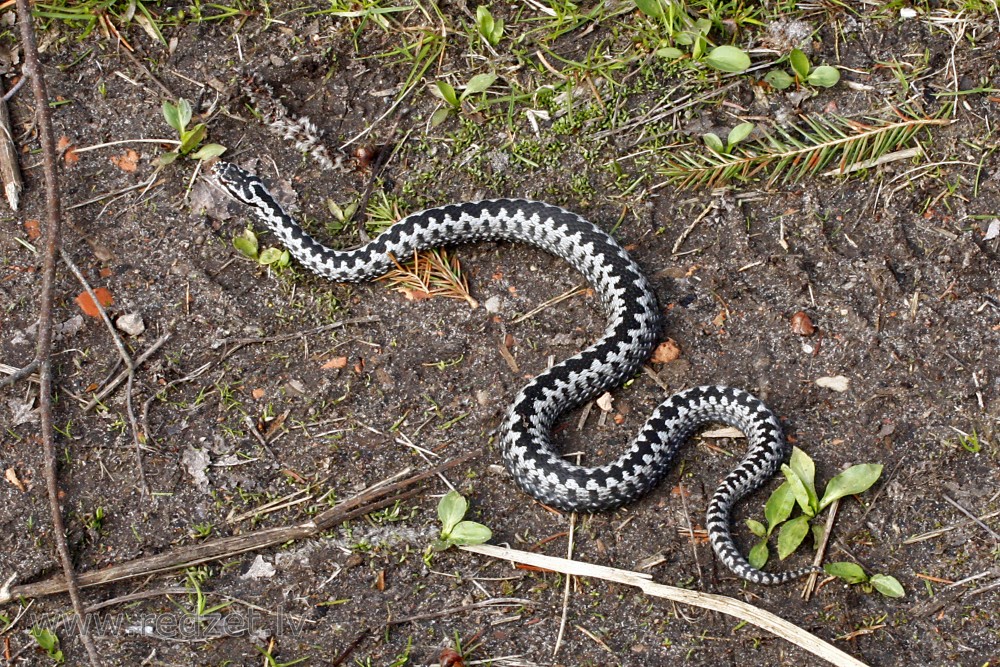Adder (Vipera berus)
Vipera berus, also known as the common European adder and the common European viper, is a species of venomous snake in the family Viperidae. The species is extremely widespread and can be found throughout most of Central Europe and Eastern Europe, and as far as East Asia. There are three recognised subspecies.
Known by a host of common names including common adder and common viper, the adder has been the subject of much folklore in Britain and other European countries. It is not regarded as especially dangerous; the snake is not aggressive and usually bites only when really provoked, stepped on, or picked up. Bites can be very painful, but are seldom fatal. The specific name, berus, is Neo-Latin and was at one time used to refer to a snake, possibly the grass snake, Natrix natrix.
The common adder is found in different terrains, habitat complexity being essential for different aspects of its behaviour. It feeds on small mammals, birds, lizards, and amphibians, and in some cases on spiders, worms, and insects. The common adder, like most other vipers, is ovoviviparous. Females breed once every two or three years, with litters usually being born in late summer to early autumn in the Northern Hemisphere. Litters range in size from three to 20 with young staying with their mothers for a few days. Adults grow to a total length (including tail) of 60 to 90 cm (24 to 35 in) and a mass of 50 to 180 g (1.8 to 6.3 oz). Three subspecies are recognized, including the nominate subspecies, Vipera berus berus described here. The snake is not considered to be threatened, though it is protected in some countries.
| Common European adder | |
| Kingdom: | Animalia |
| Phylum: | Chordata |
| Class: | Reptilia |
| Order: | Squamata |
| Suborder: | Serpentes |
| Family: | Viperidae |
| Genus: | Vipera |
| Species: | V. berus |
Description
Relatively thick-bodied, adults usually grow to 60 cm (24 in) in total length (including tail), with an average of 55 cm (22 in). Maximum size varies by region. The largest, at over 90 cm (35 in), are found in Scandinavia; specimens of 104 cm (41 in) have been observed there on two occasions. In France and Great Britain, the maximum size is 80–87 cm (31–34 in). Mass ranges from 50 g (1.8 oz) to about 180 grams (6.3 oz).
Shows the front parts of two common adders. One snake has the normal colour while the other has melanistic colour/pattern form. The head of the normal snake is enclosed in a half-coil of the melanistic form.
The head is fairly large and distinct and its sides are almost flat and vertical. The edge of the snout is usually raised into a low ridge. Seen from above, the rostral scale is not visible, or only just. Immediately behind the rostral, there are two (rarely one) small scales.
Dorsally, there are usually five large plates: a squarish frontal (longer than wide, sometimes rectangular), two parietals (sometimes with a tiny scale between the frontal and the parietals), and two long and narrow supraoculars. The latter are large and distinct, each separated from the frontal by one to four small scales. The nostril is situated in a shallow depression within a large nasal scale.
The eye is relatively large—equal in size or slightly larger than the nasal scale—but often smaller in females. Below the supraoculars are six to 13 (usually eight to 10) small circumorbital scales. The temporal scales are smooth (rarely weakly keeled). There are 10–12 sublabials and six to 10 (usually eight or 9) supralabials. Of the latter, the numbers 3 and 4 are the largest, while 4 and 5 (rarely 3 and 4) are separated from the eye by a single row of small scales (sometimes two rows in alpine specimens).
Midbody there are 21 dorsal scales rows (rarely 19, 20, 22, or 23). These are strongly keeled scales, except for those bordering the ventral scales. These scales seem loosely attached to the skin and lower rows become increasingly wide; those closest to the ventral scales are twice as wide as the ones along the midline. The ventral scales number 132–150 in males and 132–158 in females. The anal plate is single. The subcaudals are paired, numbering 32–46 in males and 23–38 in females.
The colour pattern varies, ranging from very light-coloured specimens with small, incomplete, dark dorsal crossbars to entirely brown ones with faint or clear, darker brown markings, and on to melanistic individuals that are entirely dark and lack any apparent dorsal pattern. However, most have some kind of zigzag dorsal pattern down the entire length of their bodies and tails. The head usually has a distinctive dark V or X on the back. A dark streak runs from the eye to the neck and continues as a longitudinal series of spots along the flanks.
Unusually for snakes, it is often possible to distinguish the sexes by their colour. Females are usually brownish in hue with dark-brown markings, the males are pure grey with black markings. The basal colour of males will often be slightly lighter than that of the females, making the black zigzag pattern stand out. The melanistic individuals are often females.
en.wikipedia.org



